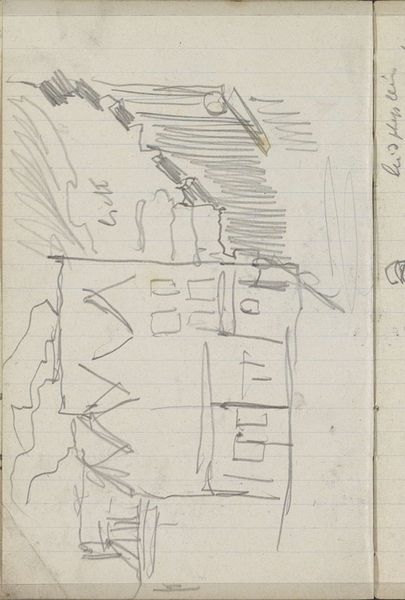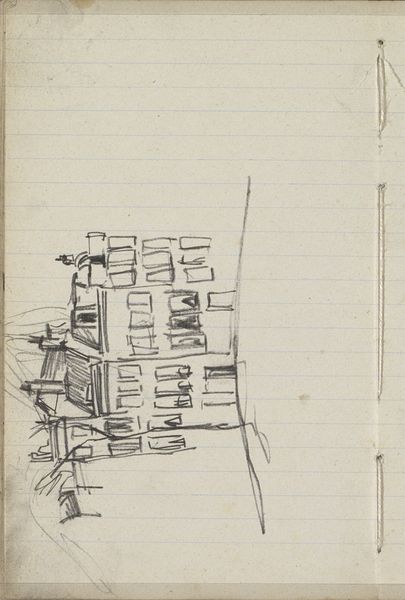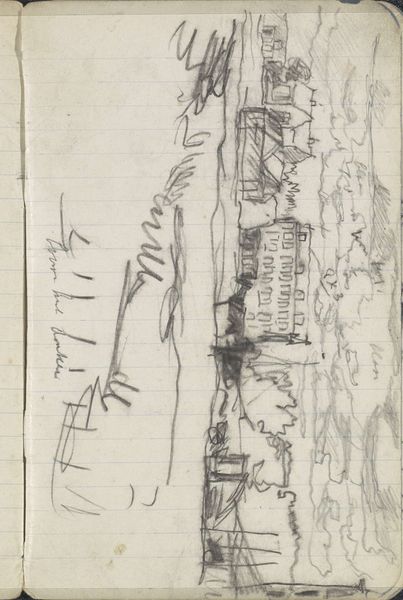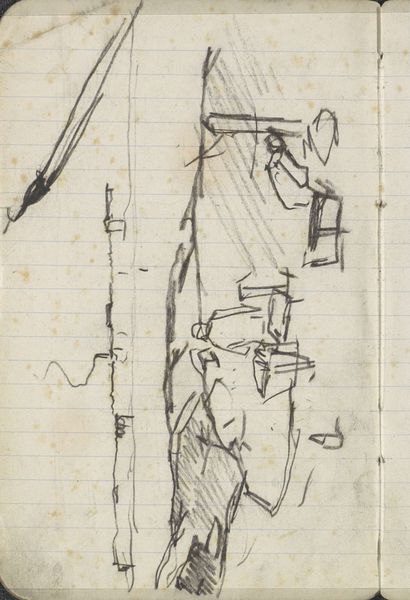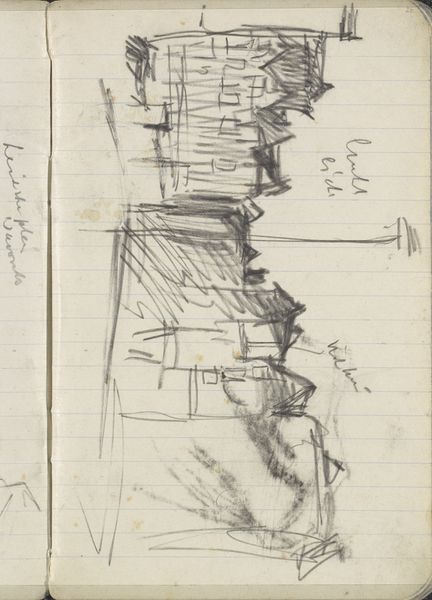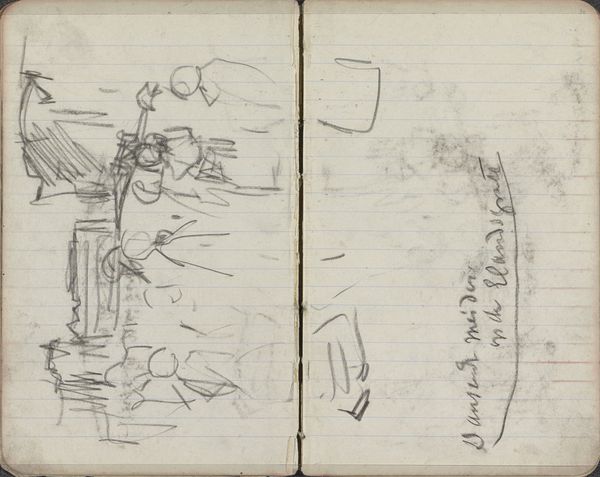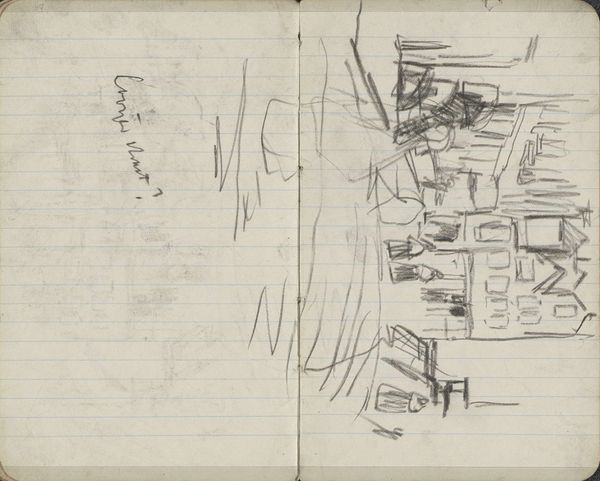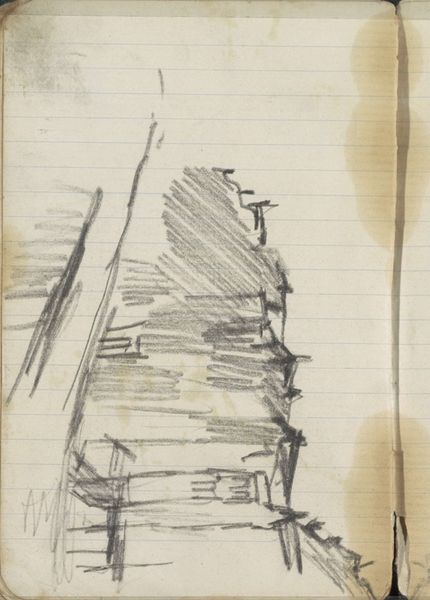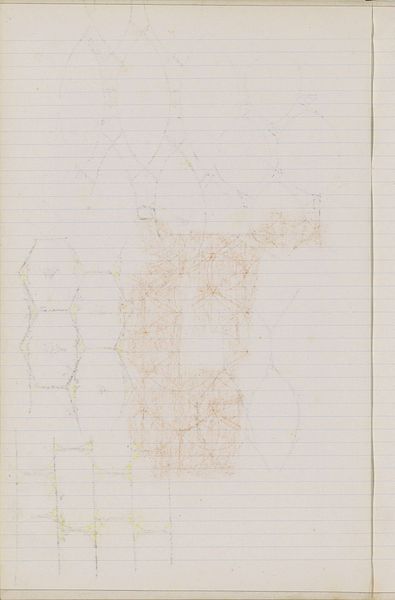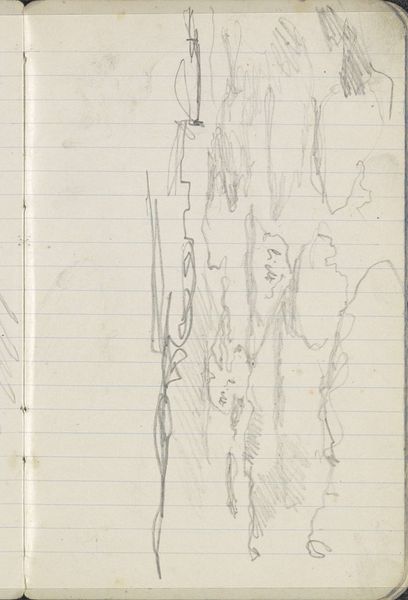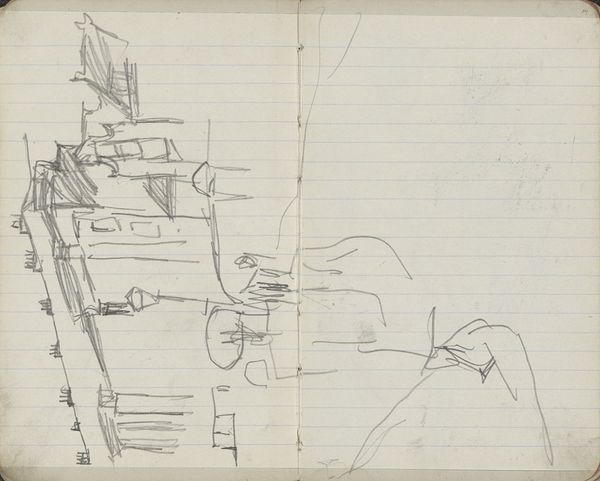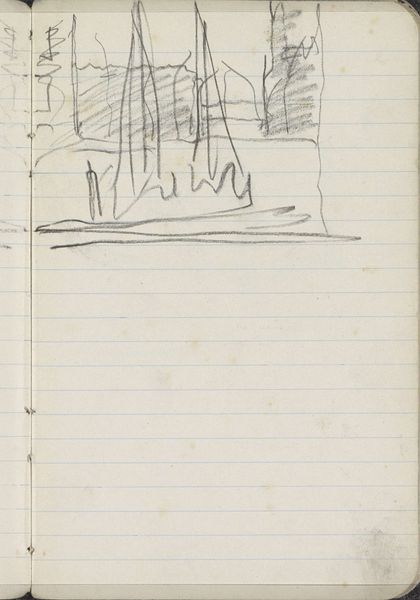
Huizenrij in Amsterdam, mogelijk aan de noordzijde van het Spui 1898 - 1902
0:00
0:00
Copyright: Rijks Museum: Open Domain
Curator: Before us, we have George Hendrik Breitner's "Huizenrij in Amsterdam, mogelijk aan de noordzijde van het Spui," a drawing made with pencil on paper sometime between 1898 and 1902. It’s currently held at the Rijksmuseum. Editor: Immediately, I’m struck by its starkness, almost like a fleeting thought captured on paper. The use of line is so economical, distilling the essence of these buildings. There is also something interesting in the relation between the horizontal lines of the notebook paper and the lines of the facades. Curator: That economical line is quite characteristic of Breitner’s Impressionistic approach, focusing on capturing the immediacy of the urban experience. Breitner was very interested in everyday city life; it’s tempting to read these rows of houses as social commentary. Think about housing conditions in Amsterdam at the turn of the century. Editor: I see that, but the roughness with which it is drawn transcends its documentary aspect. I can't help but appreciate how the repetition of rectangular forms generates rhythm. Look how some windows are heavily shaded in contrast to blank surfaces. It gives it dynamism. Curator: Yes, and this dynamism is quite deliberately situated in the social sphere. Breitner positioned himself as a chronicler of modern life; he portrayed the working class alongside the more affluent. These buildings bear witness to changing social fabric of Amsterdam. The city was undergoing rapid expansion, transforming its urban layout and thus affecting people's life conditions. Editor: Certainly. However, its effectiveness as social commentary hinges on how Breitner visually communicates this changing reality. Notice that most lines do not close perfectly. Instead they are presented as gestures that suggest and hint at their presence. Curator: That incompletion feels representative of the evolving nature of urban life. We only get a snippet; a snapshot. It highlights Breitner's effort to situate himself at the heart of modernity and to offer a visual record of this transformative period. Editor: It's as if, in this simple sketch, Breitner laid bare the skeletal framework not just of buildings but of an entire era. A study of urban forms in their historical and social context can then be enriched by careful consideration of the expressive, gestural linework, making "Huizenrij in Amsterdam" far more resonant than just a preliminary drawing.
Comments
No comments
Be the first to comment and join the conversation on the ultimate creative platform.
